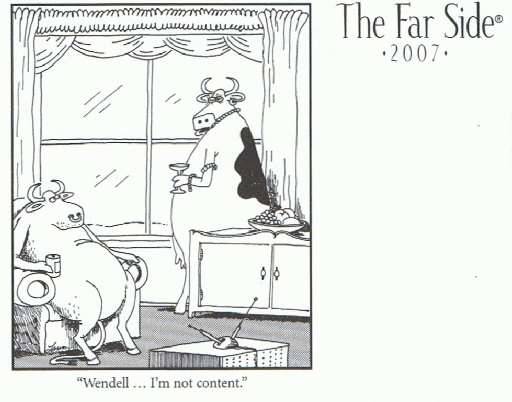 Author Archive for Jeff White
Author Archive for Jeff White
Jeff White is the founder of www.TheStockBandit.com, a nightly newsletter for active traders. He has been trading his own account for over a decade and currently trades full time in Texas.
Questions and Answers
September 26, 2007 at 7:03 am
Here are a few questions I’ve been asked in recent days by other traders which I thought some of you might find to be helpful. I’ve included the questions in bold below, along with my answers….
How would you describe your trading style, other than swing trading?
I am more of a quick-hit (Bandit) type of trader, so I don’t mind booking quick double-digit percentage gains in only a few days. For example, on Monday over at TheStockBandit.com we closed out a nice 15.5% winner in LDK, a stock we held just 4 days after buying it last Wednesday when it broke out at $61.00 from its ascending triangle pattern. The fast gains are my favorite kind, and I’m much more prone to be in and out of trades in a few days than to linger for weeks on end hoping my idea will eventually pan out. I stick with the charts, and I want to be in when there’s momentum and out when there isn’t. In addition to swing trading, I also like to catch some day trades for faster, smaller gains of a couple percent. These plays also come from the charts but typically in stocks which look poised for a temporary move where I can grab an initial breakout (or breakdown if shorting).
I’ve read about the Turtles, do you often catch major turns with your trading?
Quick money is fine with me, in fact I like it better than slow money! It adds up more rapidly and I don’t usually have the patience of a Turtle to stay long or short a stock (or index) for more than 2-3 weeks. I want my money turning over more rapidly, compounding faster.
How do you deal with closing out a solid gain, only to see the stock keep going without you?
It can be tough but that is sometimes just part of trading. I’ve found that when strong trends are present, multiple entries can set up along the way, letting me trade the same stock a few times profitably even if I don’t catch the entire move. I like catching a piece of it but I feel no obligation to participate in a long-term trend. I want to get in, get paid, and get out. That’s what my Bandit style is based on.
I have trouble leaving a nice winner on the table, how do you decide when it’s time to cash out? Any help would be appreciated.
For most of my trades I will set up my entry, stop, and usually 2 targets. Setting two profit targets allows me to book some gains along the way to ring the register while waiting for a potentially larger move to develop. That helps me offset the urge to take a good trade off the table, so partial sales are definitely helpful for allowing you to stay with the stock if even with a smaller position late in the trade. Most traders think they need to be IN or OUT of a trade, but few of them consider the idea of partial sales in order to scale out of a good trade carefully.
Trade well out there today!
Jeff White
President, The Stock Bandit, Inc.
Swing Trading & Day Trading Service
www.TheStockBandit.com
[tags]Stock Market, Day Trading, Stock Trading, Investing, Swing Trading[/tags]
Don’t Wear Out Your Welcome
September 24, 2007 at 6:52 am
We’ve all been in trades which were treating us well, moving along in the anticipated direction as we giggled to ourselves about what we might spend the profits on….only to get slapped in the face when we get too greedy and stay too long after the move exhausts itself. It’s called wearing out your welcome, and it’s very tough on us as traders. It can easily lead to a loss of confidence, causing you to become timid with subsequent trades which you should be aggressive with. The fear of giving back gains again causes micro-management of trades, as a lack of trust begins to replace that winning swagger you once had.
Profits are the aim of our trading efforts, so it’s vital to recognize when the time comes to ring the register and pay ourselves.
Wearing out your welcome applies to a lot of arenas, so making a habit not to do it in other areas of your life can help to establish some better trading habits. For example, I was a professional golfer for a few years right out of college. A local country club allowed me access to their facility as a courtesy as long as I didn’t overstay my welcome. If they were hosting a tournament or it was a busy day with lots of members around, I slipped away and found another place to practice. Had I stayed too long, they likely would have asked me to leave, which would have been costly to me. As a result of my respect for them, we had a great relationship and they were happy to extend their facilities to me, knowing that I would not impose on the freedom of their members. All I had to do was stay aware of the conditions without getting consumed in my own activities.
Similarly, successful trading should be the same way. When you make a profitable trade and a stock meets your criteria for exit, don’t overstay your welcome! Knowing when it’s time to cash out and find another place for your trading capital is crucial to developing yourself as a profitable trader. Manage your trades well and you will end up happy. Staying too long and trying to squeeze that last drop of profit out of the trade will likely prove costly, not only in the current trade but perhaps also in your confidence going forward, depending on how much of your open profits you give back.
It’s been said that the last $0.25 can be the most expensive part of a trade, and I couldn’t agree more! So if you enter a stock for a trade, take most of your profits as a trade. Don’t say those 5 expensive words or let a trade become an investment. Always following your trading plan and resisting that urge to get greedy will let you come out ahead with both your profits and confidence intact.
Jeff White
President, The Stock Bandit, Inc.
Swing Trading & Day Trading Service
www.TheStockBandit.com
[tags]Stock Market, Day Trading, Stock Trading, Investing, Swing Trading[/tags]
Satisfy Your Craving For Risk
September 17, 2007 at 10:36 am
Most traders at least occasionally have to deal with the urge….the temptation….the allure of taking on more risk. Sound familiar?
Risk’s Widespread Appeal
I’ve had the good fortune of spending time and trading with quite a few traders of all types. Some trade stocks, others trade futures or options. Some of them are day trading, others are swing trading. Some of them trade part time, others trade full time. But regardless of the characteristics which define their approach, every last one of them has at some point felt this urge of which I speak.
Oh there have been some great stories along the way of big wins and losses, but every single memorable story involves risk. Great days and even downright pathetic days will all boil down to how much risk is taken, and how well it is managed. If you stop to think about it, we’re all quite lucky to have the ability to make this choice every day. Those who become highly skilled in the balancing act of taking and managing risk effectively become successful traders. Those who do not will quickly become a mere statistic.
Gambles Must Be Small
I’ll venture to say that all great traders have a respect for risk in the markets they trade, and as a result they all have a certain level of discipline which goes along with it. I’ve commented to people before when asked if day trading is a high-risk endeavor that “it could be your own little Las Vegas every day of the week if you want it to be” but that taking that path almost guarantees a brief career as a trader. Personally, I don’t want a real job!
But what if you love to take occasional risks? Can you still be a great trader? What if you just have that urge to swing for the fence sometimes? Well, I’m here to tell you that it can hurt you, unless you do it the right way.
Taking high-risk trades doesn’t have to mean the kinds of gambles which get amateur traders into trouble. Stubbornness and speculation are not the same thing. The trader who blows out his account after adding repeatedly to a losing position is very different from the trader who puts on a small position as a hunch, risking a limited amount and never putting his trading livelihood on the line. Buying a lotto ticket isn’t the same as putting your car keys into a Friday night poker pot! Rolling the dice is alright on occasion, so long as the consequences aren’t significant enough to cause any real damage.
Some traders might want to buy a small amount of a high-flyer, trade some out-of-the-money options, or dabble in some illiquid little stock while waiting for an anticipated story to play out. Maybe you can’t fight the urge to take a few shares of a stock into earnings, or to try to game a Fed move after the announcement, both of which are a complete coin-toss. Perhaps you’re able to do this right alongside your normal positions and never let these little speculations interfere with your day-to-day operations, but if you’re like me, you find them somewhat distracting as your attention moves from what you should be watching to these little speculative trades like horses in a race.
The Solution for Speculators
Never fear, there is a solution: trade multiple accounts! I’ve found this to be the ideal way to separate different types of trades, allowing me to satisfy that occasional urge to take a risk while still keeping my attention where it needs to be – on my primary trading account.
Funding a speculative or secondary account with only a fraction of what your primary trading account is funded with will keep any profits or losses at a minimum, because remember, profits isn’t the point of a secondary spec account. This account exists solely to let you trade the high-risk plays in order to scratch that itch for an occasional home-run-or-strikeout type of play. The aim of this account is to let you act on those urges without the consequences if you’re wrong. After all, these are the kinds of plays which could really wreck your main account, so keeping them separate and tiny lets you focus on what matters most – pulling consistent gains out of the market in a more methodical way than going for the long ball.
These secondary accounts can also be used to hide longer-term plays from plain view, which will come in handy on occasion. What happens if you’re short-term bearish but have some long-sided positions socked away for the long term? It’s easy under the gun to lump everything together, but separating your timeframes across accounts can be an effective way to trade both timeframes according to your plan. Secondary or spec accounts also effectively hide the number while letting your higher-risk plays fully develop.
If you haven’t considered having a primary trading account and at least one smaller trading account to satisfy your urge for that occasional added risk you love to take, give it a shot and you’ll quickly see the benefits. Have the discipline to set one up. If anything, it’ll keep your pain to a minimum when you swing for the fence and miss, while keeping you focused on the types of trades which really pay the bills.
Jeff White
President, The Stock Bandit, Inc.
Swing Trading & Day Trading Service
www.TheStockBandit.com
[tags]Stock Market, Day Trading, Stock Trading, Investing, Swing Trading[/tags]
My Best Investment Ever – It’s A Boy!
September 10, 2007 at 3:37 am
Last week I became a dad, and needless to say I am thoroughly thrilled! I’ll be back writing in a few days, but just had to share the big news. Baby boy weighed in at 5lb. 13oz., and is happy and healthy at home with mama. I couldn’t ask for anything more.

At times in life, events and people come along to put everything into perspective for us, and that’s particularly true for us as traders. The flickering numbers and charts on our screens often become all too important to us until something else reminds us what life’s really all about. Whether trading is a hobby or a profession for you, I’m sure you’ve had weeks where your trading results dictated your moods, and others during which you never even thought about trading because it’s been farther down the priority list. The past few days for me can definitely be described as the latter!
In a couple more days I’ll make the transition back to full-time trader and you’ll find some market-related content showing up here again, but at the moment I’m loving the opportunity to tend to my personal life and adjust to my new role as a father! What an experience!
P.S. Check out the time stamp on this post! 🙂
Jeff White
President, The Stock Bandit, Inc.
Swing Trading & Day Trading Service
www.TheStockBandit.com
Reduced Trading Timeframes
August 27, 2007 at 11:17 am
With so many sharp and sudden reversals taking place recently, it’s certainly the kind of market in which one can easily overstay their welcome. They say that “bulls make money, bears make money, but pigs get slaughtered.” Well, this is no market for pigs. That trade you just nailed might suddenly reverse and erase all your gains. In the trading world, you always have to stay vigilant with your trading capital, but that’s particularly true right now.
Lately I’ve mentioned quite a few times to members at TheStockBandit.com how reducing trading timeframes is important in the current market environment, and I want to just take a moment to explain what I mean by that. It’s certainly not a phrase which is exclusive to me, but what does it mean exactly to reduce your timeframe as a trader?
To me, there are a couple of ways to do it. The first is to simply reduce your holding time for the types of trades you like to take. Whether you’re trading the long side or the short side, this tape is offering opportunities for you but you have to be very quick or else it’s easy to give some back. Reducing your trading timeframe can simply mean to book profits quicker once you start to get that good move you planned for.
Another way to reduce your trading timeframe is to zoom in on the chart. If you typically look at the daily charts but you’re finding very little to work with, zooming in your timeframe to watch the intraday price action might offer more setups. Of course, you’re looking more under the microscope, which means you’ll also have to expect smaller moves as a result. However, the same chart patterns which work on the daily charts can be found intraday and they tend to play out the same way. Breakout plays, buying pullbacks to support, and short selling at resistance can still be done on the 30-minute or even 5-minute charts. This can offer a continued flow of trades if you still have the itch for activity.
Regardless of your timeframe though, remember to stick with a plan. When headfakes are as prevalent as right now, frustration can set in more easily and cause you to overtrade. Know what you’re going after on a given day, and only take the trades which fit your criteria.
Jeff White
President, The Stock Bandit, Inc.
Swing Trading & Day Trading Service
www.TheStockBandit.com
[tags]Stock Market, Day Trading, Stock Trading, Investing, Swing Trading[/tags]
Trading vs. Investing: Two Kinds of Good Markets
August 20, 2007 at 8:48 am
“Regular” people I know (non-traders) are “invested.” They have 401k’s with company stock and mutual funds. They have managed money trying to outpace the market. They look at performance stats of money managers and funds before depositing their hard-earned dollars in such places.
And then they wait.
They hope.
They need.
They wait for the market to climb. They hope for an advance. They need a bull market. They want the little ticker at the bottom of their news screen to show a green arrow beside the DJIA or the S&P 500, or else they’re losing money.
They’re fully-dependent upon the market to produce their gains for them. For them to profit, the market must rally over time, and historically it has. As goes the market, so go their returns. But they have jobs and other demands on their time during the day, so they’re not interested in nailing a move right after an economic report or energy inventory number is released. They want their funds to grow over the next 10, 20, or 30 years from now so that they can quit their jobs and retire comfortably. I can understand that, so I don’t fault them.
A Trader’s Needs Are Different
Me? I’m not one of the “regular” people. I’m a trader and therefore entirely different.
I wait for opportunities. I hope for good chart setups. I need volatility.
Whether the market is up, down, or flat for the year doesn’t begin to tell the story of my returns. I’ve had fantastic days when “the market” was down after nailing some shorts. I’ve had huge days when the market was flat. And sadly perhaps, I’ve had pathetic days when the market screamed higher without so much as a minor dip! 🙂 That’s how trading works, and I wouldn’t, uh…. trade it for anything. I absolutely love it, and I can’t wait to see which opportunities will surface after the next opening bell.
But I must admit that “the market” does impact my trading. The most notable influence on my trading is whether a trend is underway or not. The presence or lack of a trend will impact my directional bias, my timeframe, and even my activity levels. Volatility is another piece of the puzzle, as too much of it will curb my aggression and not enough of it may remove me from my screen altogether. Volume is important (as I recently noted), because I need quality executions and enough liquidity to get into or out of trades without added slippage.
“Good” vs. “Bad” Markets
To me, when “the market” is good I see lots of high-quality chart patterns. In a “good market” I know I can risk a little to make a lot more(by swing trading), even though I’ll be wrong sometimes. A “good market” isn’t necessarily an up market, but it is on the move and giving me waves of activity which I can attempt to time and profit from. I only need a piece of a move to make my day’s pay.
A “bad market” to me is of course not necessarily a down market, but one which is offering few opportunities or poor risk/reward trades. “Bad markets” mean less activity and a greater focus on preserving my precious trading capital while I wait for better conditions to arrive. Needless to say, trading heavily in a “bad market” means spinning my wheels or losing ground, and those are things I specifically want to avoid in my trading plan!
If you’re a trader, I’m sure you can relate to this. Listening to talking heads on TV blab endlessly about where the market will be by the end of the year is a waste of your time. Always be measuring whether the conditions are ripe for your style of trading, and only take action when they are. Don’t get seduced by big point moves in the averages or fear that you need to just buy something in order to participate in a run. Stick to your method and know that your discipline will get you through bull markets, bear markets, and everything in between.
Jeff White
President, The Stock Bandit, Inc.
Swing Trading & Day Trading Service
www.TheStockBandit.com
[tags]Stock Market, Day Trading, Stock Trading, Investing, Swing Trading[/tags]
Bulls in Pain
August 16, 2007 at 9:35 am
 Bulls continue to suffer, and they are anything but content at the moment. Short-term support levels have been breached, lower highs have been created, and bounces have thus far merely served as selling opportunities for limping bulls to raise more cash. It’s really getting ugly out there, and their accounts and egos have been badly bruised!
Bulls continue to suffer, and they are anything but content at the moment. Short-term support levels have been breached, lower highs have been created, and bounces have thus far merely served as selling opportunities for limping bulls to raise more cash. It’s really getting ugly out there, and their accounts and egos have been badly bruised!
Over at TheStockBandit.com, we closed out our last long position back on 7/24 and have exclusively been swing trading the short side ever since. It has paid off nicely with some big quick moves like over $9 profit in ESI in 6 days and more than $10 in FWLT in 2 days. The fast money sure beats staying long and wrong! However, we can’t just load the boat on the short side until some relief comes in from this nonstop punishment of the bulls. A bounce will come, and at this point it’s too late in the current decline to press. Waiting for new bearish chart patterns to emerge will pay off much better than jumping the gun here and chasing stocks lower.
As I said 11 days ago, if ever there was a time to be sitting in cash, this is it! There’s absolutely zero reason to try to arbitrarily call a tradable bottom, so don’t fight this downdraft.
Catch some short sales when you can, and otherwise wait for the storm clouds to clear. Eventually they will, and Wendell will have his day again. But for now, he’s certainly not content!
Jeff White
President, The Stock Bandit, Inc.
Swing Trading & Day Trading Service
www.TheStockBandit.com
[tags]Stock Market, Day Trading, Stock Trading, Investing, Swing Trading[/tags]





